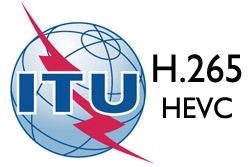Europe's online source of news, data & analysis for professionals involved in packaged media and new delivery technologies

New video codec to ease pressure on global networks agreed by the ITU
A new video coding standard building on the ITU-T H.264 / MPEG-4 AVC, just agreed by members of the Geneva-based International Telecommunication Union (ITU), aims to ease the burden on global networks where, by some estimates, video accounts for more than half of bandwidth use.
The new standard, known informally as 'High Efficiency Video Coding' (HEVC) will need only half the bit rate of its predecessor, ITU-T H.264 / MPEG-4 Part 10 'Advanced Video Coding' (AVC), which currently accounts for over 80% of all web video.
ITU-T's Study Group 16 has agreed first-stage approval (consent) of the standard known formally as Recommendation ITU-T H.265 or ISO/IEC 23008-2. It is the product of collaboration between the ITU Video Coding Experts Group and the ISO/IEC Moving Picture Experts Group.
ITU-T H.264 / MPEG-4 AVC is deployed in products and services from companies including Adobe, Apple, BBC, BT, France Telecom, Intel, Microsoft, Motorola, Nokia, Polycom, Samsung, Sony, Tandberg, Toshiba and others to deliver high definition video images over broadcast television, cable TV, a variety of direct-broadcast satellite-based television services, Blu-ray disc formats, mobile phones, videoconferencing tools, digital storage media, and Internet Protocol television (IPTV). It remains the most deployed global video compression standard.
ITU-T H.265 / ISO/IEC 23008-2 HEVC will provide a flexible, reliable and robust solution, future-proofed to support the next decade of video. The new standard is designed to take account of advancing screen resolutions and is expected to be phased in as high-end products and services outgrow the limits of current network and display technology.
Story filed 26.01.13




















